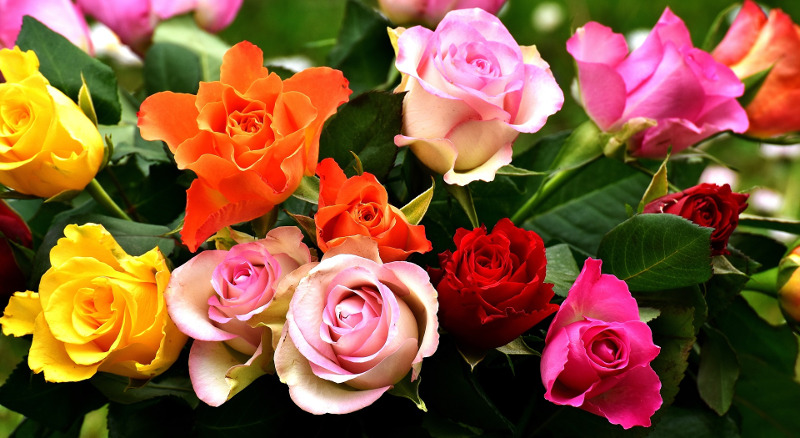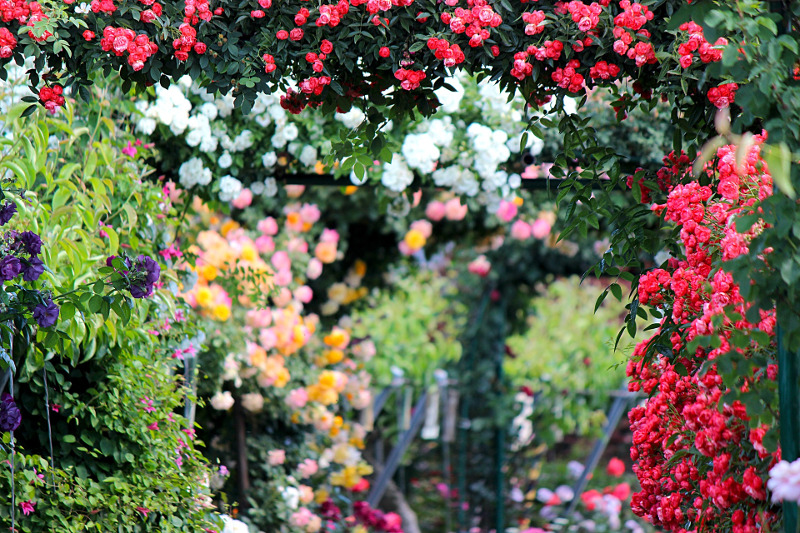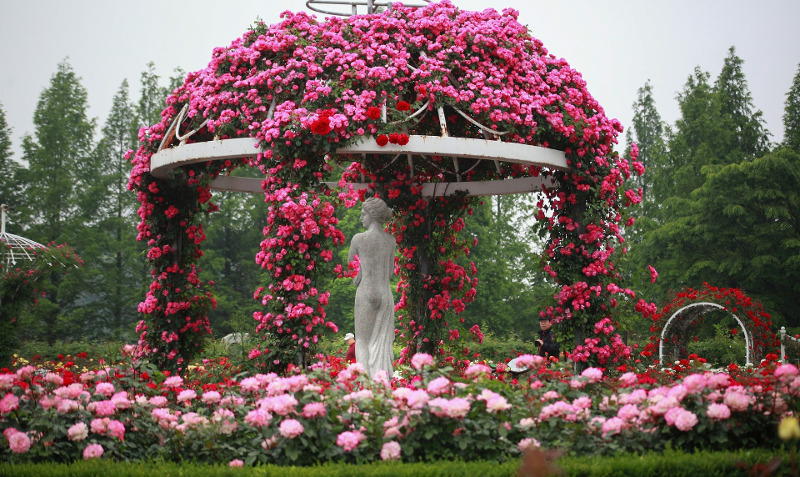The rose, America’s favorite flower, has existed for over 35 million years. The Rosa genus offers over 300 species, thousands of varieties, almost every color, and comes in many shapes. If you’d like to explore in depth about rose classifications and different hybrids, take a look at The American Rose Society. In the meantime, we hope to offer you a brief summary to help guide you towards which rose variety is best for your garden area. Roses are divided into three categories: Old Garden Roses, Modern Garden Roses, and Wild Roses. Lets start there.

Categories of Roses
Old Garden Roses
Old garden roses, often referred to as heritage, historical, or antique roses, have been around since before 1867. These roses have a strong fragrance, double flowered blooms, and are disease resistant. Old garden roses are very hardy, but only bloom once a year during the summer. Old roses include Bourbon, Damask, Gallica, Tea, China, and Rambler.
Modern Roses
Modern roses are those varieties bred after 1867. These are the most common roses in today’s gardens. Modern roses offer repeated blooming, larger blooms, and a longer vase life. Very showy, these rose varieties are less disease resistant, less fragrant, and less hardy than Old Garden Roses. These include hybrid tea, polyantha, floribunda, grandiflora, shrub, climbers, and miniature roses.

Wild Roses
Wild Roses, “Species Roses” are considered the wildflower of the rose world. These roses have not been cross-bred like Modern Rose varieties. They are a single bloom, five-petal flower. A fun fact--- wild roses are almost always the color pink. It is very unusual to find a red or white wild rose, and you have hit the jackpot if you find a yellow one. These single-flowered types come in shrub or climbing forms and include Rosa arkansana, R. virginiana, R. banksiae, R. glauca, and R. woodsii.
Varieties of Roses
Now that we have touched on the three different categories of roses, let’s look at some of the most popular rose varieties.
Hybrid Tea Rose
The hybrid tea rose is a popular one in the modern rose group. This upright growing plant boasts long canes (3-6 feet) which makes it a great cut flower for a vase. Its large blooms can grow up to fives inches in diameter, with blooms in most colors. Despite not being very hardy and a bit fussy to take care of, the hybrid tea rose is the favorite of floral shops everywhere.
Floribunda Rose
Prior to 1940, Floribundas were called Hybrid Polyantha Rose. This flower is a cross between a Hybrid Tea and Polyantha Rose. It is a short bush with clusters of blooms in the shape of the Hybrid Tea Rose bloom. Some Floribundas will bloom with a single blossom making it even more similar to the Hybrid Tea Rose. Found in a variety of colors, it is disease resistant, hardy, and easy to care for. Floribunda Roses make a great landscaping bush for businesses, parks areas, or your own garden.
Grandiflora Rose
A Grandiflora Rose is a class that was created which crosses Floribunda and Hybrid Tea Roses. This rose is a tall plant growing up to 6 feet. Grandiflora Roses have the gorgeous blooms of the Hybrid Tea Rose and the repeated growth cycle of the Floribunda. Grandiflora Roses can bloom singly or in clusters of 3-5 blooms. Despite being hardy, it is less popular than Hybrid Tea or Floribunda Roses. Grandiflora Roses are often used as a middle or back border accent plant in a landscape area.
Polyantha Rose
Polyantha is a shrub rose that blooms with large clusters of small flowers. Known for being low-maintenance, hardy, and disease resistant, Polyantha Roses are a popular choice of gardeners. It is a great container plant, is often used as a hedge, or is perfect for a smaller garden area.
Miniature Rose
Miniature roses are tiny versions of Hybrid Tea Roses. Growing in a height between 15 and 30 inches, miniature refers to the size of the blooms and not the plant itself. Most miniature roses continually bloom for two to three weeks at a time. Miniature roses are a very hardy versatile plant. It works well in a container for a deck or patio, a small garden area, or as an indoor houseplant.
Shrub Rose
Shrub roses are a variety of roses that do not easily fit into any other category. A cross between Old Garden Roses and Modern Roses, shrub roses are hardy and easy to care for, boasting large clusters of repeated blooms. Growing from 5-15 feet in all directions, shrub roses are great for larger landscapes or garden areas.
Climbing Rose
Climbing roses do not actually climb, but can be directed upright with the help of a gardener’s manipulation of the canes. Attaching it to a fence, wall, or trellis, climbing roses will produce more roses climbing vertically versus horizontally. Also known as a rambling rose, it has large repeating blooms and is cold hardy.

Groundcover Rose
Similar to climbing roses, these will spread or "trail" as they grow, rather than grow into a shrub form. The growth habit of these makes it an idea plant to cover large areas in the garden in front of other taller plants. It helps prevent weeds from overtaking the area, and provides beauty in an area that would typically be covered in mulch. You can also train these plants to grow downwards, to cover a retaining wall, or to be the "spiller" in a container.
Tree Rose
Tree roses are created by grafting a rose bush onto a single stem in the form of a tree. Usually a Hybrid Tea or Floribunda is the rose choice. Tree roses need more care and attention and it can easily freeze in cold climates.
Selecting the Best Rose Variety
With so many different types of roses to choose from, it is best to think about the following things when deciding which rose to purchase.
-
Pick the best rose for your growing conditions.
-
Hardiness zone, soil requirements.
-
Decide on the purpose for your rose choice.
-
Border, shrub, ground cover, climbing, focal point.
-
PIck a rose you like.
-
Color, scent, size.
-
Read and follow the plant information carefully.

 |
Author Chris Link - Published 05-28-2021 |
